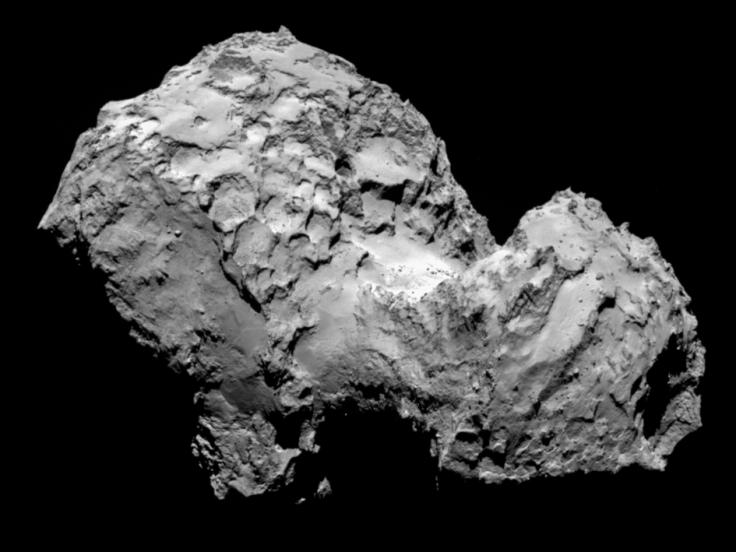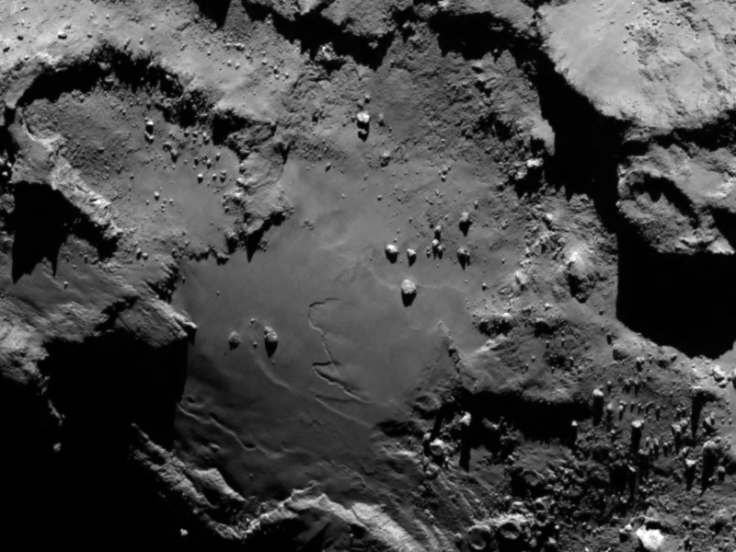Rosetta Comet Rendezvous: Lander Mission In November And Year-Long Ride Await Spacecraft

The Rosetta comet rendezvous is a success after the European Space Agency guided the spacecraft to its target Tuesday. From its launch in 2004 to hibernation in 2011 to waking up in January 2014, Rosetta has spent more than a decade chasing down comet 67P/Churyumov-Gerasimenko and is the first spacecraft to orbit around a comet.
“Hello, Comet!” pic.twitter.com/mvFIxGWC8y
— ESA Rosetta Mission (@ESA_Rosetta) August 6, 2014“After 10 years, five months and four days traveling towards our destination, looping around the sun five times and clocking up 6.4 billion kilometers, we are delighted to announce finally ‘we are here’,” Jean-Jacques Dordain, ESA’s director general, said in a statement.
Comets are considered "building blocks of the solar system," and the data collected from 67P/Churyumov-Gerasimenko could lead to new insights into the evolution of the solar system and, possibly, how life formed on Earth, notes ESA. Rosetta and comet 67P/Churyumov-Gerasimenko are currently between Mars and Jupiter, around 405 million kilometers (around 250 million miles) from Earth, notes ESA.
Rosetta began a series of burns in May to correct its orbit and reduce its velocity. The spacecraft completed its final thruster burn to reduce its speed at 3 a.m. EDT and the team at the ESA’s headquarters in Darmstadt, Germany, cheered when the operations team confirmed Rosetta reached the comet, with Sylvain Lodiot, the operations manager, exclaiming, “We’re at the comet!”

Rosetta has sent back photos of comet 67P/Churyumov–Gerasimenko from just 80 miles away, reports NASA. In the image, surface features can be clearly seen, such as craters and cliffs.
Rosetta’s arrival at the comet marks the beginning of the next scientific phase. The spacecraft will perform a triangular path around the comet that will put Rosetta as close as 30 kilometers (around 18 miles). Rosetta has a suite of 11 scientific instruments which will be used to analyze the gas of the coma, or atmosphere, and the tail, dust grain composition and distribution, comet dust, and the physical structure of the comet's nucleus.
As part of the Rosetta mission, the spacecraft will travel along with the comet as it makes it way around the sun, through the end of 2015. Prior to that, Rosetta will place a lander on the comet, scheduled for Nov. 11, 2014. ESA will have to identify a landing location by the end of August.
"Operationally we need to find a safe landing site, away from too much surface roughness, and have a site that has sufficient sunlight to ensure the lander can recharge itself. We also must consider having sufficient line of sight with the orbiter to transmit to Earth. In addition, we will consider the scientific aspects of the surface, determining which features are more interesting than others, which will be part of the hot discussions in the next months," said Matt Taylor, a Rosetta project scientist, in an interview with IBTimes.
© Copyright IBTimes 2024. All rights reserved.












